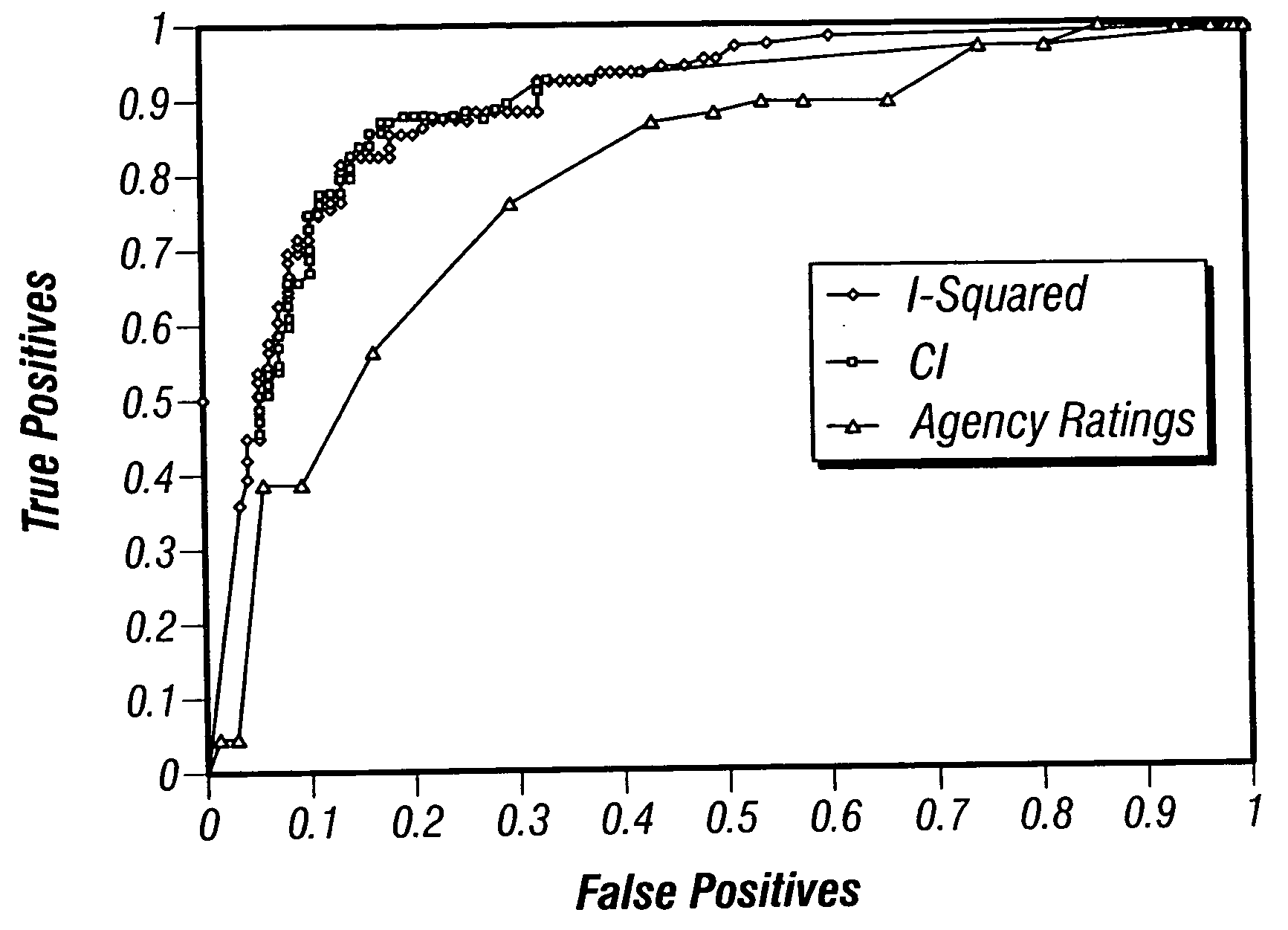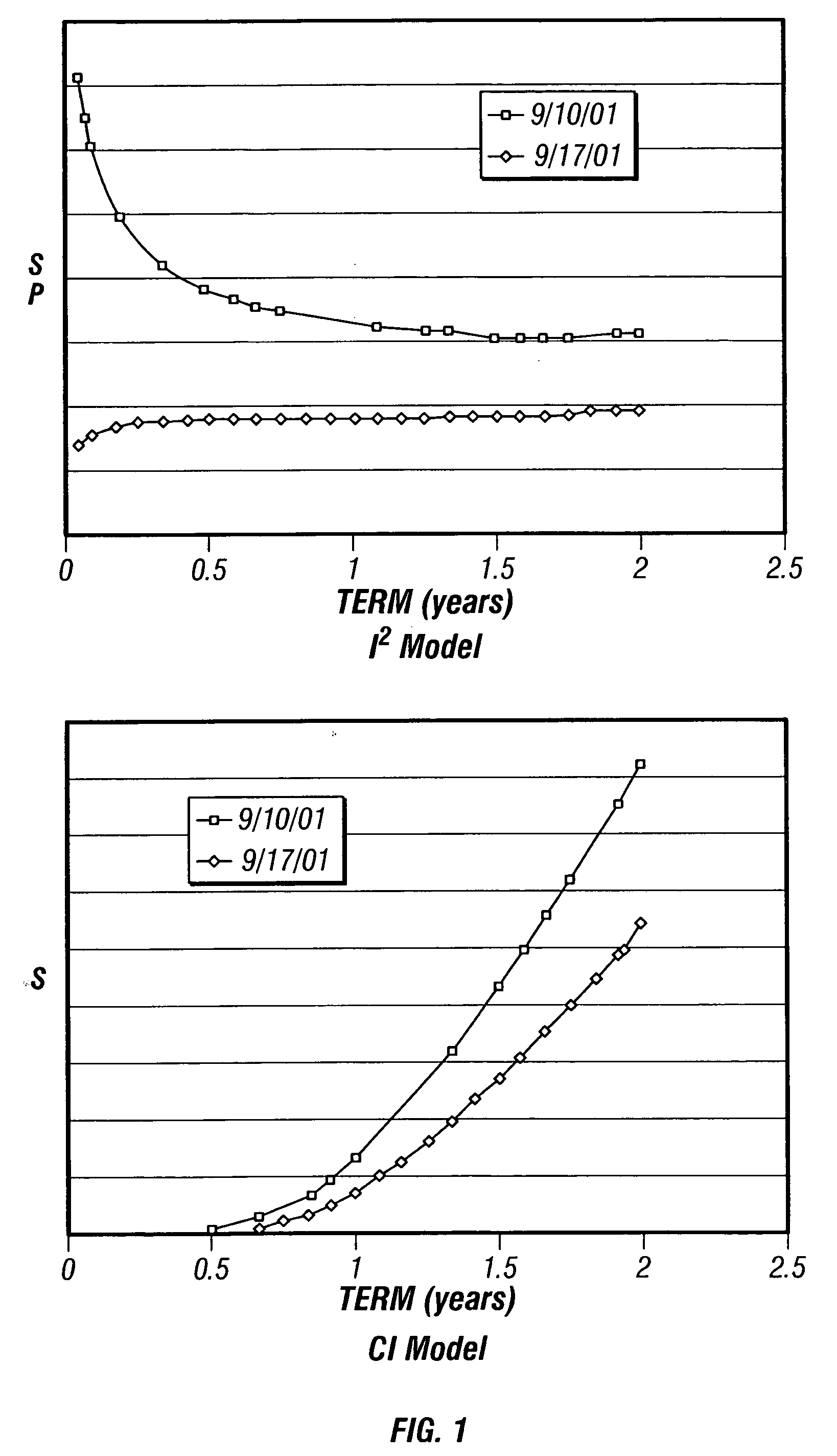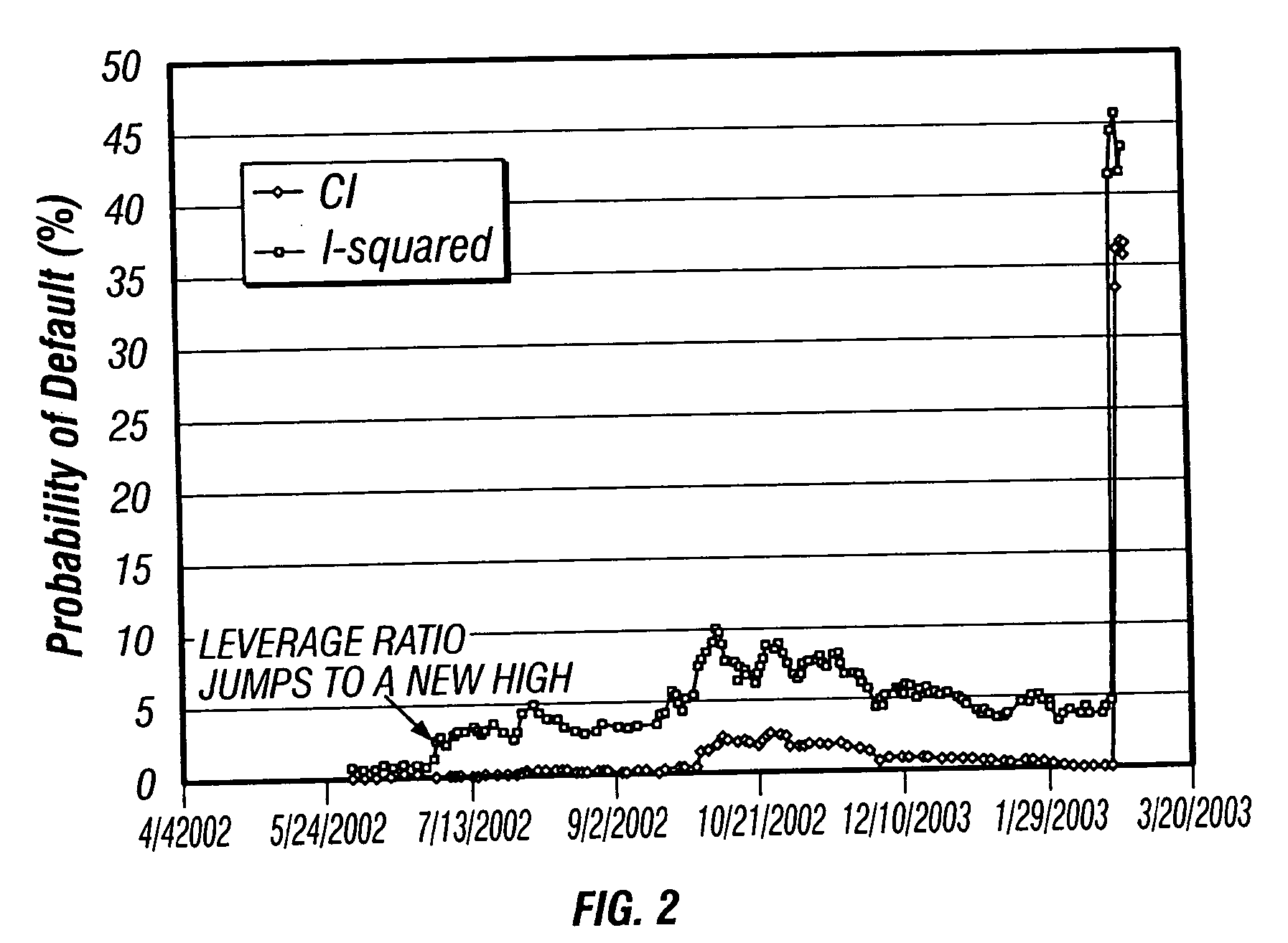Method and apparatus for an incomplete information model of credit risk
a credit risk and incomplete information technology, applied in the field of forecasting systems modeling credit risk, can solve the problems of difficult integration of both approaches, difficult to give a precise definition of default, and difficult to predict zero short-term spreads
- Summary
- Abstract
- Description
- Claims
- Application Information
AI Technical Summary
Problems solved by technology
Method used
Image
Examples
Embodiment Construction
[0140] Following are two embodiments of the invention. The first embodiment of the invention gives estimates only of default probabilities. The second embodiment of the invention gives estimates of several additional credit risk factors.
[0141] It should be appreciated that both embodiments are updated daily and both have a two-step procedure. In the first preliminary step, historical information is used to calibrate the parameters of the default barrier. The second and final step outputs the default probabilities and the other credit risk factors.
[0142] A First Exemplary Embodiment of the Invention
[0143] A first exemplary embodiment of the invention is described with reference to FIG. 8, a flow diagram for calculating default probabilities 2100 according to the invention. The basis of this embodiment of the invention is a system of two equations in two unknowns that express equity value and equity volatility in terms of firm value, firm volatility, the default barrier, and a risk fr...
PUM
 Login to View More
Login to View More Abstract
Description
Claims
Application Information
 Login to View More
Login to View More - R&D
- Intellectual Property
- Life Sciences
- Materials
- Tech Scout
- Unparalleled Data Quality
- Higher Quality Content
- 60% Fewer Hallucinations
Browse by: Latest US Patents, China's latest patents, Technical Efficacy Thesaurus, Application Domain, Technology Topic, Popular Technical Reports.
© 2025 PatSnap. All rights reserved.Legal|Privacy policy|Modern Slavery Act Transparency Statement|Sitemap|About US| Contact US: help@patsnap.com



